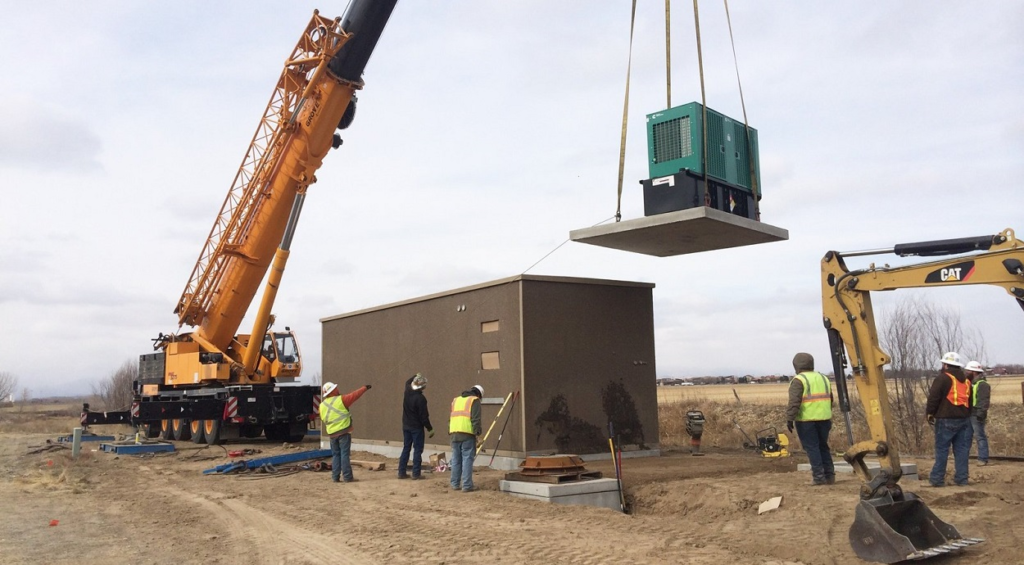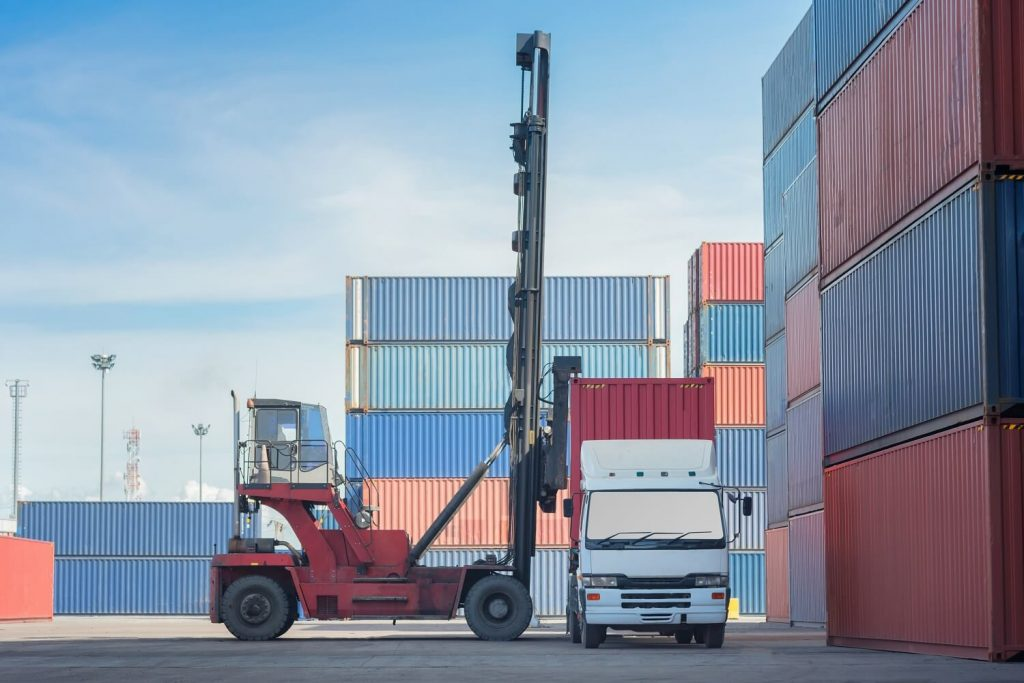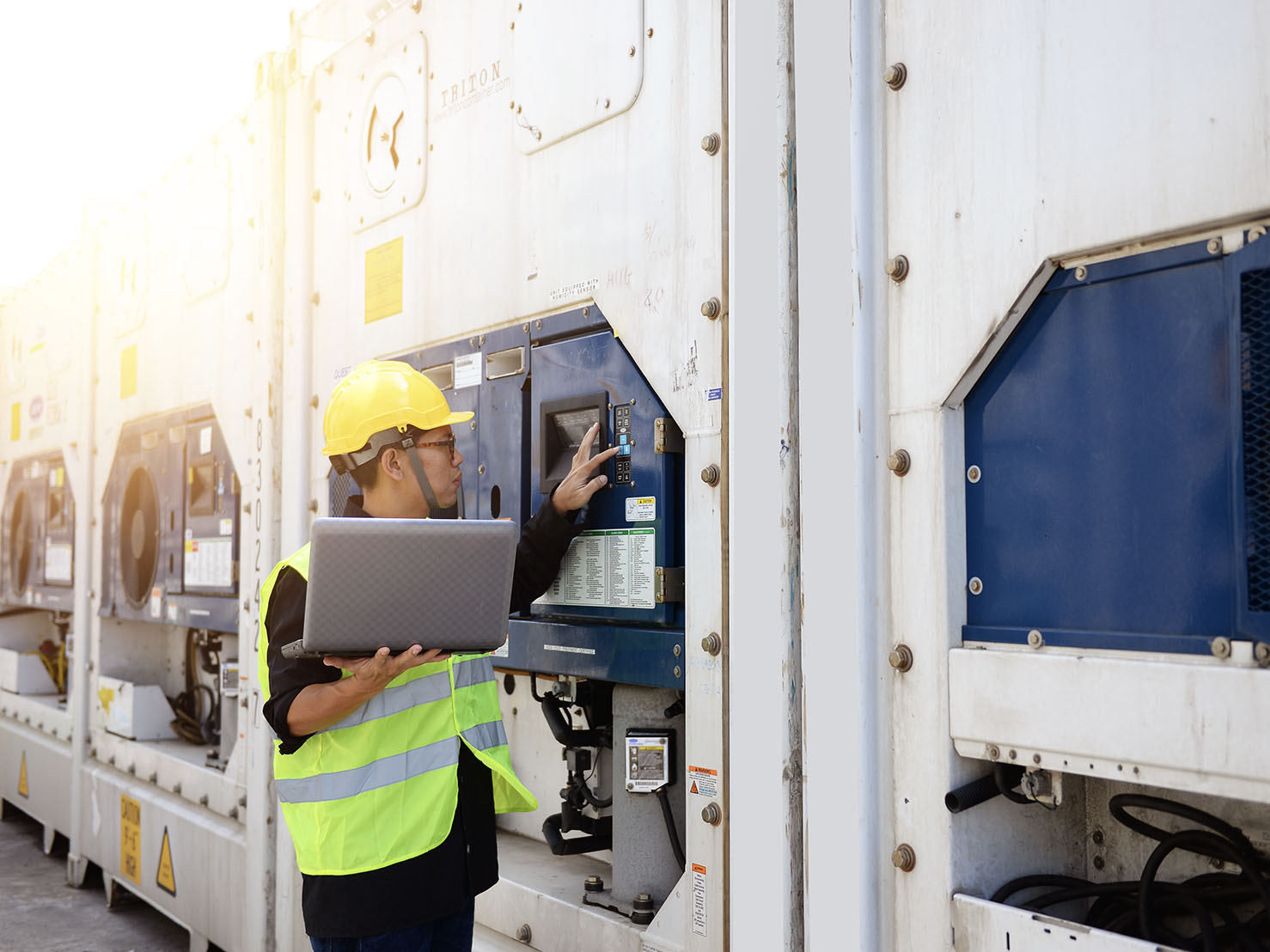Loading Supervisor (1 years diploma)
Loading Supervisor click here
Brief Job Description
Loading Supervisors are also known as Dispatch Supervisors or Supervisors. Individuals in this role are
responsible for checking inbound or outbound goods, recording information regarding the shipment of
goods, allocating work and supervising the loading and unloading function. They are typically found in
warehouses with large scale operations and may also perform certain activities of the warehouse
supervisor role as required.

Personal Attributes
This job requires the individual to work well with his/her team and achieve joint goals. The individual must
be able to prioritize and execute tasks within scheduled time limits. The individual should be able to
maintain high concentration levels throughout his/her shift.
Minimum Educational Qualification &
Experience
10th Class
OR
8th Class (+ 2 years of ITI)
OR
8th Class (+ 1 year of ITI) with 1 Year of
experience relevant experience
OR
Certificate-NSQF (Loader/ Unloader – level
2) with 1 Year of experience relevant
experience
Minimum Level of Education for Training in
School
Pre-Requisite License or Training NA
Minimum Job Entry Age 18 Years
Last Reviewed On NA
Next Review Date NA
NSQC Approval Date
Version 3.0
Prepare for Supervising Operations
Description
This unit is about preparing for supervising operations
Elements and Performance Criteria
Collect information lists and tracking documents
To be competent, the user/individual on the job must be able to:
PC1. obtain the day’s work schedule, incoming truck schedules, work orders, checklist and bill of
lading from the warehouse supervisor
PC2. obtain tracking sheets for outbound goods from the warehouse supervisor.
PC3. understand manpower, machine availability, priorities and deadlines (if any) from the
warehouse supervisor
PC4. coordinate with transport coordinator/consolidator for loading schedules
Allocate work to loaders/unloaders
To be competent, the user/individual on the job must be able to:
PC5. based on the work schedule, assign loaders and unloaders to different loading docks.
PC6. briefly explain the nature of the goods to be loaded or unloaded and the work plan along with
the targets.
PC7. conduct handover meeting when shift change happens to update the new workers on the
status of activities.
PC8. enusre periodic reviews to maintain productivity
Knowledge and Understanding (KU)
The individual on the job needs to know and understand:
KU1. knowledge of organizational products and procedures
KU2. role and responsibilities of workers on the shop floor
KU3. procedures for dealing with loss or damage to goods
KU4. risk and impact of not following defined procedures/work instructions
KU5. nature and characteristics of goods in the warehouse
KU6. knowledge of all relevant safety and security procedures
KU7. knowledge of coding system being used by the organization for labelling
KU8. knowledge of Standard Operating Procedures (SOPs) and how to react in emergencies.
KU9. knowledge of quick fixes for minor issues.
KU10. detailed knowledge of all activities being done in a warehouse
KU11. knowledge of loading/unloading methods for different types of goods
KU12. knowledge of how and when to use each MHE.
KU13. knowledge of product labels to be pasted onto each packing case
KU14. types of workplace hazards that one can encounter on the job and safe operating practices
KU15. knowledge of technical specifications of inbound/outbound goods.
KU16. knowledge of possible difficulties in the loading/unloading function.
Generic Skills (GS)
User/individual on the job needs to know how to:
GS1. note down in which truck each consignment is loaded into (or unloaded from).
GS2. fill out inspection checklists, damaged goods form, quarantined goods form and any other
documentation as required.

GS3. read labels and understand products contained in the packages.
GS4. read labels and understand instructions on loading and unloading different products.
GS5. read safety manuals and safety signs on the warehouse floor
GS6. communicate clearly with supervisors and peers
GS7. regularly communicate with all employees in the chain of activities on the shop floor to
ensure activities are running smoothly
GS8. provide advice and guidance to peers and juniors
GS9. act objectively , rather than impulsively or emotionally when faced with difficult/stressful or
emotional situations
GS10. ability to make a judgment as to whether the goods are in good condition or not.
GS11. adjust according to volume, capacity and manpower needs during peak and non-peak hours
GS12. prioritize and execute tasks within the scheduled time limits
GS13. maintain schedules and punctuality. avoid absenteeism
GS14. be a team player and achieve joint goals
GS15. flexibility to re-assess schedule in case of delays/additional orders
GS16. understand the customer requirements and ensure that they are met. problem
GS17. identify trends/common causes for errors and suggest possible solutions to the warehouse
supervisor
GS18. handle day to day problems like delays, staffing shortage, etc.
GS19. suggest methods to streamline the loading/unloading process
GS20. ability to cross check goods and quantities against a check list.
GS21. ability to concentrate on task at hand and complete it without errors
To be competent, the user/individual on the job must be able to:
PC19. check the condition of material handling equipment (mhe), storage racks and ppe during
rounds.
PC20. ensure timely maintenance is carried out by the maintenance technician as per company
policies
Knowledge and Understanding (KU)
The individual on the job needs to know and understand:
KU1. knowledge of organizational products and procedures
KU2. role and responsibilities of workers on the shop floor
KU3. procedures for dealing with loss or damage to goods
KU4. risk and impact of not following defined procedures/work instructions
KU5. nature and characteristics of goods in the warehouse
KU6. knowledge of all relevant safety and security procedures
KU7. knowledge of coding system being used by the organization for labelling
KU8. knowledge of Standard Operating Procedures (SOPs) and how to react in emergencies
KU9. knowledge of quick fixes for minor issues.
KU10. detailed knowledge of all activities being done in a warehouse
KU11. knowledge of loading/unloading methods for different types of goods.
KU12. knowledge of how and when to use each MHE.
KU13. knowledge of product labels to be pasted onto each packing case.
KU14. types of workplace hazards that one can encounter on the job and safe operating practices
KU15. knowledge of technical specifications of inbound/outbound goods.
KU16. knowledge of possible difficulties in the loading/unloading function.
Generic Skills (GS)
User/individual on the job needs to know how to:
GS1. note down in which truck each consignment is loaded into (or unloaded from).
GS2. fill out inspection checklists, damaged goods form, quarantined goods form and any other
documentation as required.
GS3. read labels and understand products contained in the packages.
GS4. read labels and understand instructions on loading and unloading different products.
GS5. read safety manuals and safety signs on the warehouse floor
GS6. communicate clearly with supervisors and peers
GS7. regularly communicate with all employees in the chain of activities on the shop floor to
ensure activities are running smoothly
GS8. provide advice and guidance to peers and juniors
GS9. act objectively , rather than impulsively or emotionally when faced with difficult/stressful or
emotional situations
GS10. ability to make a judgment as to whether the goods are in good condition or not.
GS11. adjust according to volume, capacity and manpower needs during peak and non-peak hours
GS12. prioritize and execute tasks within the scheduled time limits
GS13. maintain schedules and punctuality. avoid absenteeism
GS14. be a team player and achieve joint goals

GS15. flexibility to re-assess schedule in case of delays/additional orders
GS16. understand the customer requirements and ensure that they are met.
GS17. identify trends/common causes for errors and suggest possible solutions to the warehouse
supervisor
GS18. handle day to day problems like delays, staffing shortage, etc.
GS19. suggest methods to streamline the loading/unloading process
GS20. ability to cross check goods and quantities against a check list.
GS21. ability to concentrate on task at hand and complete it without errors
Update Status, Perform Inspection and Reporting
Description
This unit is about updating status and performing inspection and reporting
Elements and Performance Criteria
Update loading/unloading status
To be competent, the user/individual on the job must be able to:
PC1. take note of the pending tasks/shipments that did not arrive during the workday
PC2. conduct sun down meeting with workers and explain work to be done for the next day
Inspect work areas and equipment
To be competent, the user/individual on the job must be able to:
PC3 . make sure the quarantined items are moved by the housekeeping staff to the quarantine
area for rework or for disposal.
PC4 . perform a safety inspection of loading/unloading, staging and inbound/outbound areas in the
warehouse
PC5. monitor loading equipment shortage (HOPTs, BOPTs, loading conveyor etc.)
PC6. check on the condition of equipment and ppe
PC7. ensure that all the work areas are clean and equipment is in working order
Report to management
To be competent, the user/individual on the job must be able to:
PC8. report any suspicious looking carton / object to the warehouse supervisor. any repeated
excess carton to a particular transporter / customer need to be reported (pilferage angle).
PC9. escalate to warehouse supervisor on receipt shortages and dealer/end customer claims for
timely closure along with the necessary inventory adjustments.
PC10. notify warehouse supervisor regarding any concerns faced during the day and obtain
rescheduled loading plans if required
PC11. provide daily report to warehouse supervisor regarding shipments that did not arrive,
condition of equipment, damage if any, delays, inability to meet an order, etc
PC12. place orders for replacement items with the warehouse supervisor
PC13. complete any forms as required by management
Knowledge and Understanding (KU)
The individual on the job needs to know and understand:
KU1. knowledge of organizational products and procedures
KU2. role and responsibilities of workers on the shop floor
KU3. procedures for dealing with loss or damage to goods
KU4. risk and impact of not following defined procedures/work instructions
KU5. nature and characteristics of goods in the warehouse
KU6. knowledge of all relevant safety and security procedures
KU7. knowledge of coding system being used by the organization for labelling
KU8. knowledge of Standard Operating Procedures (SOPs) and how to react in emergencies.
KU9. knowledge of quick fixes for minor issues
KU10. detailed knowledge of all activities being done in a warehouse.
KU11. knowledge of loading/unloading methods for different types of goods.
KU12. knowledge of how and when to use each MHE.
KU13. knowledge of product labels to be pasted onto each packing case.
KU14. types of workplace hazards that one can encounter on the job and safe operating practices.
KU15. knowledge of technical specifications of inbound/outbound goods.
KU16. knowledge of possible difficulties in the loading/unloading function.
Generic Skills (GS)
User/individual on the job needs to know how to:
GS1. note down in which truck each consignment is loaded into (or unloaded from).
GS2. fill out inspection checklists, damaged goods form, quarantined goods form and any other
documentation as required.

GS3. read labels and understand products contained in the packages.
GS4. read labels and understand instructions on loading and unloading different products
GS5. read safety manuals and safety signs on the warehouse floor
GS6. communicate clearly with supervisors and peers
GS7. regularly communicate with all employees in the chain of activities on the shop floor to
ensure activities are running smoothly
GS8. provide advice and guidance to peers and juniors
GS9. act objectively , rather than impulsively or emotionally when faced with difficult/stressful or
emotional situations
GS10. ability to make a judgment as to whether the goods are in good condition or not.
GS11. adjust according to volume, capacity and manpower needs during peak and non-peak hours
GS12. prioritize and execute tasks within the scheduled time limits
GS13. maintain schedules and punctuality. avoid absenteeism.
GS14. be a team player and achieve joint goals
GS15. flexibility to re-assess schedule in case of delays/additional orders
GS16. understand the customer requirements and ensure that they are met
GS17. identify trends/common causes for errors and suggest possible solutions to the warehouse
supervisor
GS18. handle day to day problems like delays, staffing shortage, etc.
GS19. suggest methods to streamline the loading/unloading process.
GS20. ability to cross check goods and quantities against a check list.
GS21. ability to concentrate on task at hand and complete it without errors
Maintain Health ,Safety and Security measures in
loading/unloading goods
Description
This unit is about health and safety measures
Elements and Performance Criteria
Maintain health, safety and security measures during all activities
To be competent, the user/individual on the job must be able to:
PC1. comply with safety regulations and procedures in case of fire hazards, biohazards, etc.
PC2. wear all safety equipment including protective gear, helmets etc.
PC3. follow organization procedures with respect to security, materials handling and accidents
PC4. recognize and report unsafe conditions or activities.
PC5. adhere to security regulations of the company
PC6. in case of signs of any emergency situation or accident or breach of safety immediately
follow organizational protocol to deploy action
PC7. identify reasons for occurrence of incident
PC8. capture reasons and response/action taken into incident report/note to manager
PC9. report any deviations from standard protocol along with reasons (if any)
PC10. visually inspect the activity area and equipment for appropriate and safe condition.

Knowledge and Understanding (KU)
The individual on the job needs to know and understand:
KU1. knowledge of organizational products and procedures
KU2. role and responsibilities of workers on the shop floor
KU3. procedures for dealing with loss or damage to goods
KU4. risk and impact of not following defined procedures/work instructions
KU5. nature and characteristics of goods in the warehouse
KU6. knowledge of all relevant safety and security procedures
KU7. knowledge of coding system being used by the organization for labelling
KU8. knowledge of Standard Operating Procedures (SOPs) and how to react in emergencies.
KU9. knowledge of quick fixes for minor issues
KU10. detailed knowledge of all activities being done in a warehouse.
KU11. knowledge of loading/unloading methods for different types of goods.
KU12. knowledge of how and when to use each MHE.
KU13. knowledge of product labels to be pasted onto each packing case.
KU14. types of workplace hazards that one can encounter on the job and safe operating practices.
KU15. knowledge of technical specifications of inbound/outbound goods.
KU16. knowledge of possible difficulties in the loading/unloading function.







